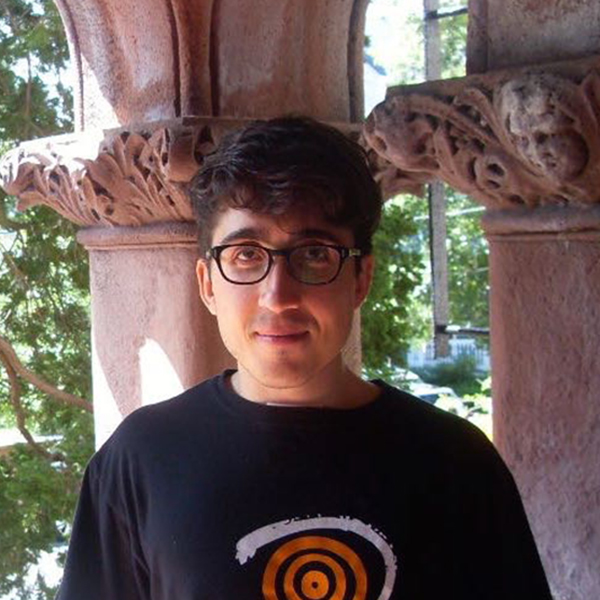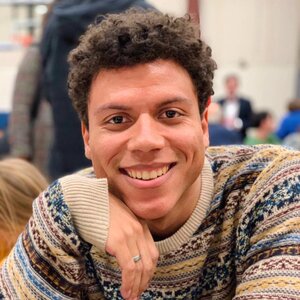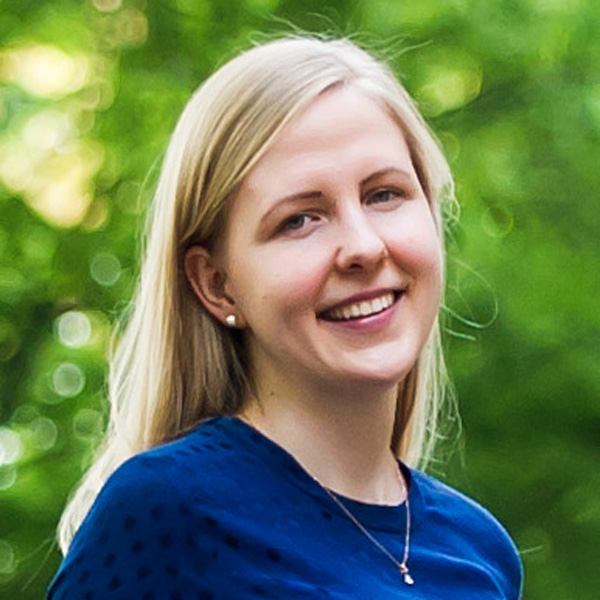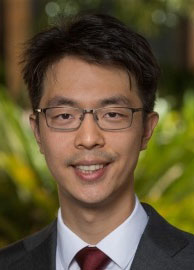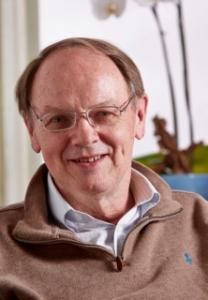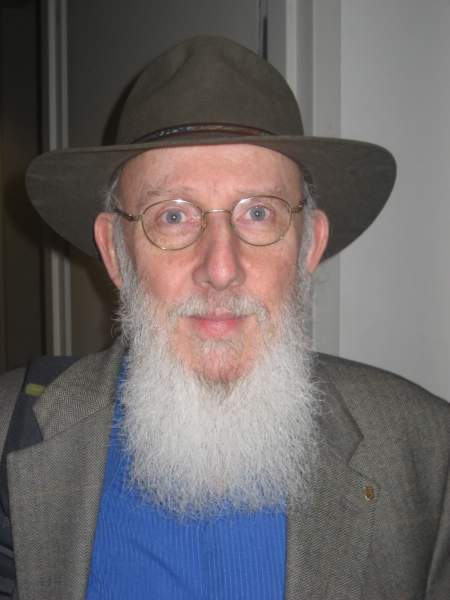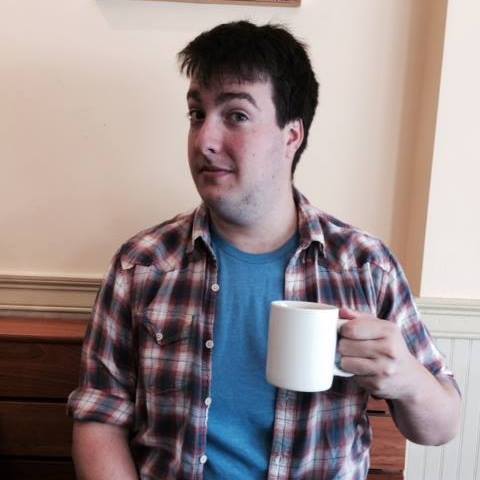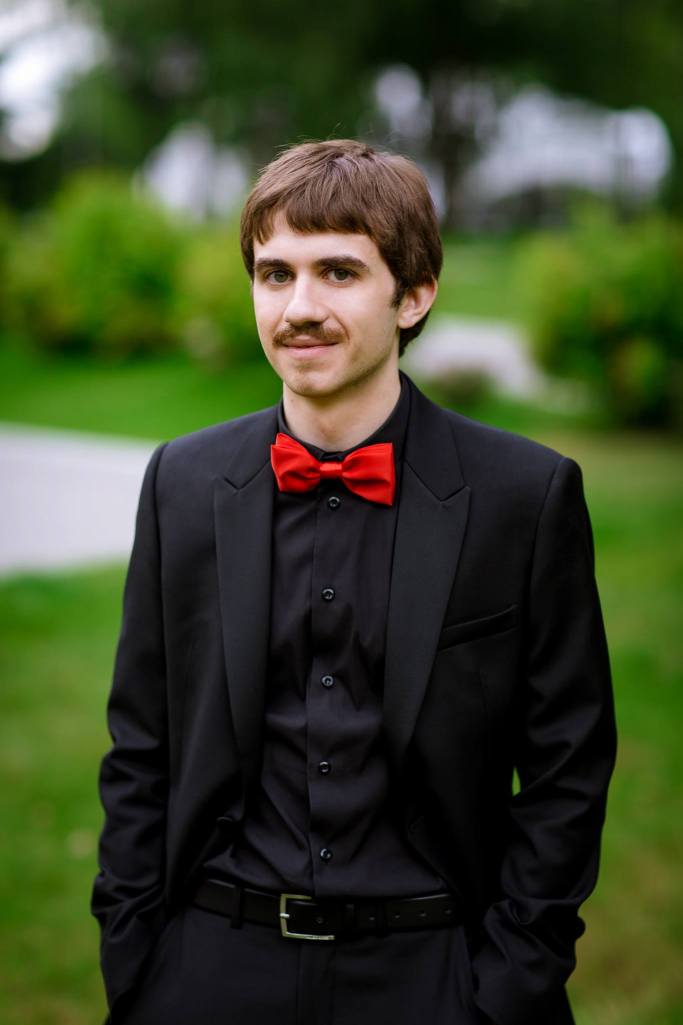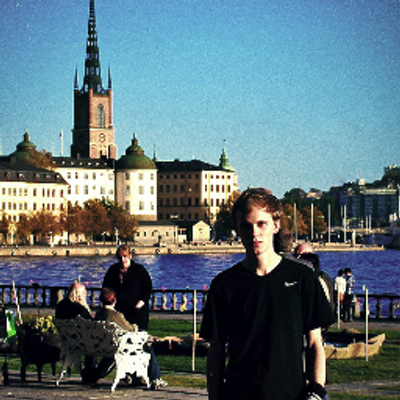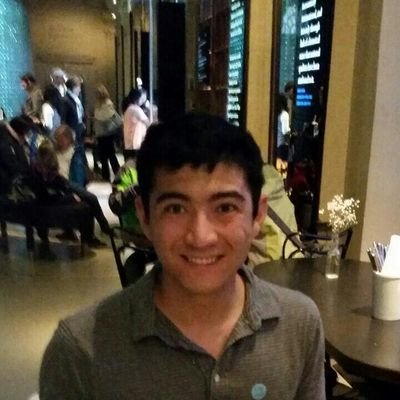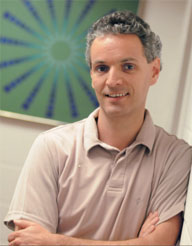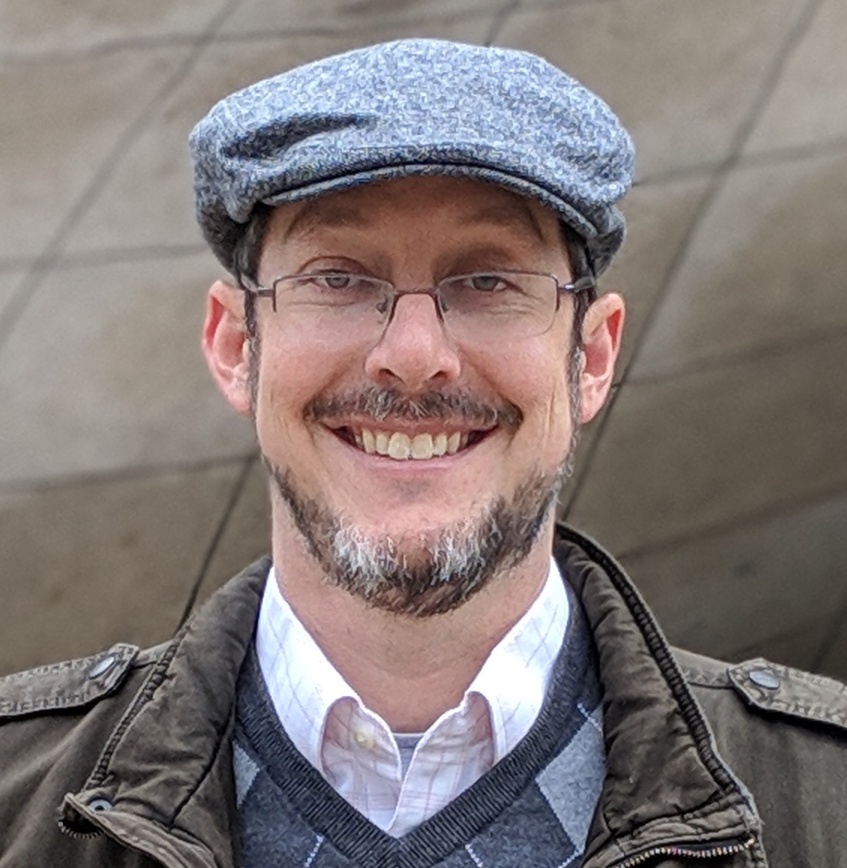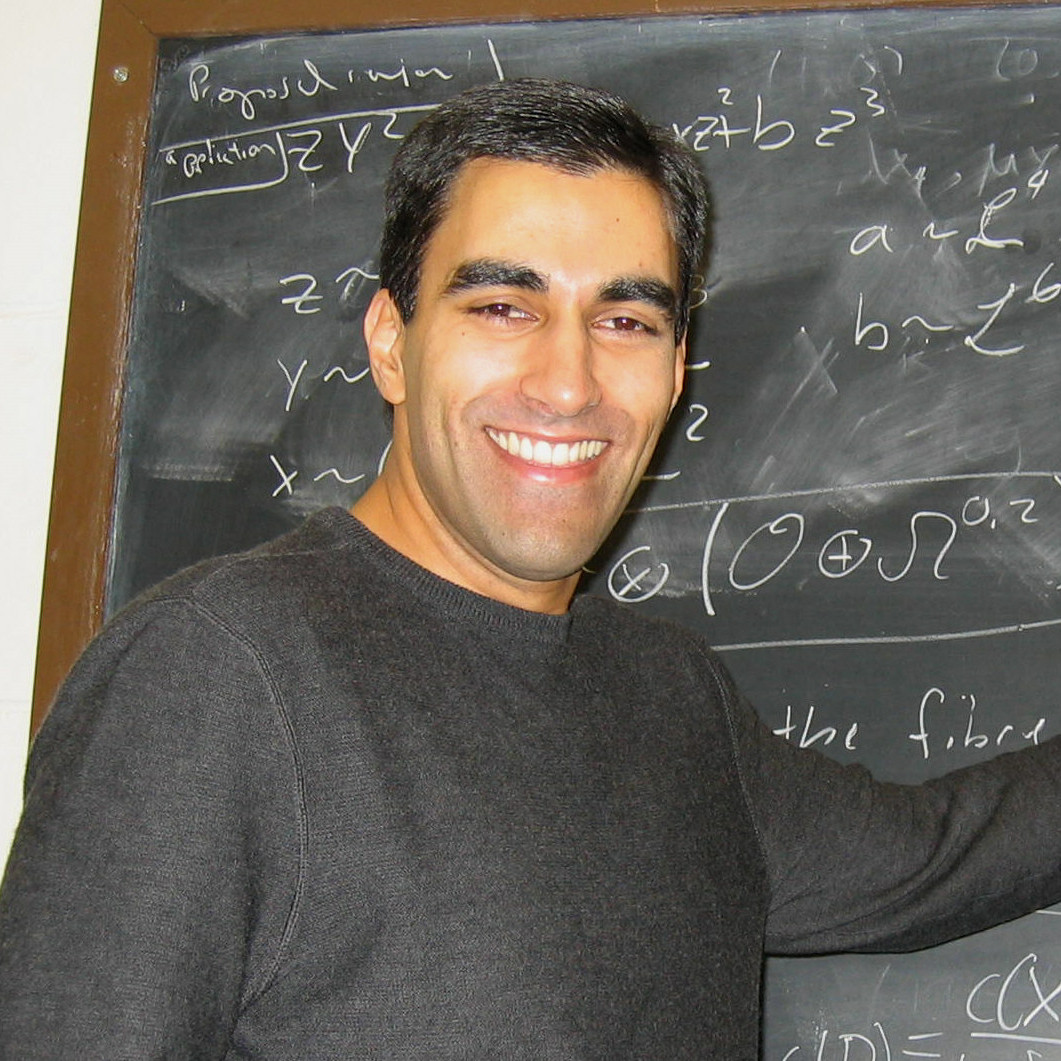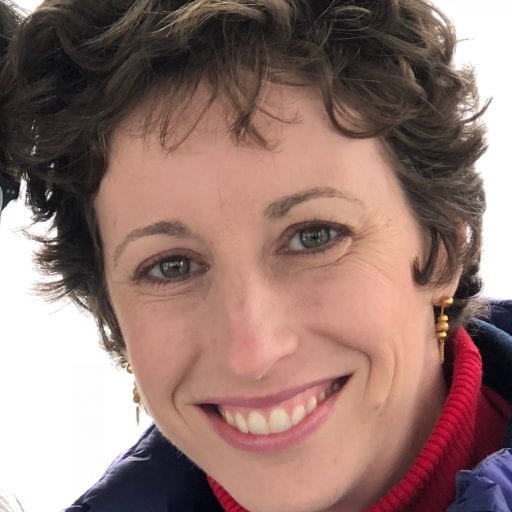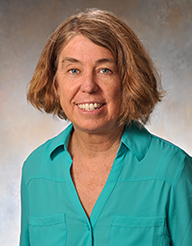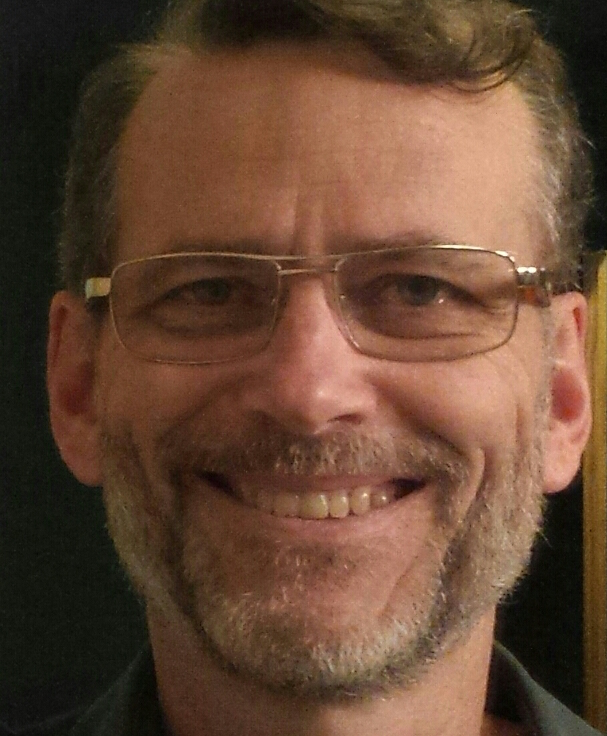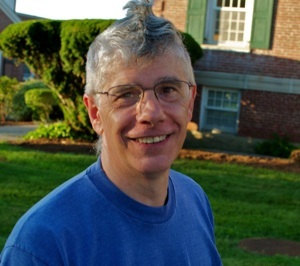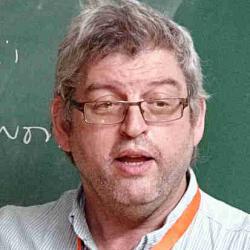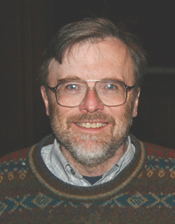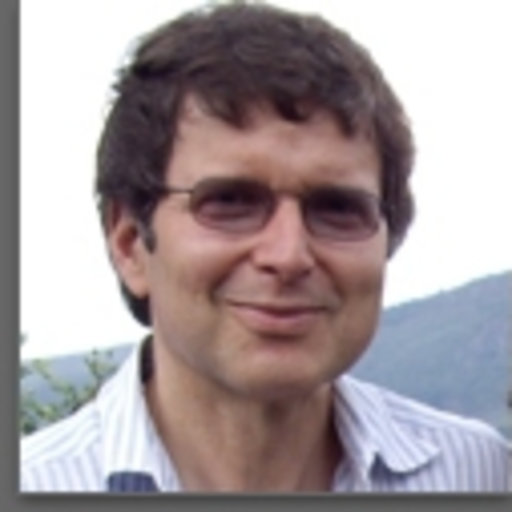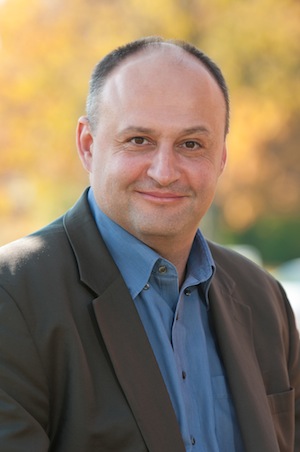Ryan Speiler,
"Topological Physics"
Week 1
Abstract. For our opening talk of the quarter, Ryan Speiler will be discussing topological physics and soft matter! The talk will be at the cutting-edge intersection of algebra, topology, and physics! ABSTRACT COMING! Ryan is a Physics graduate student at UT Austin, and was an active member of UCAMC as an undergraduate at UChicago. He stayed in Coulter house throughout his 4 years, and was an incredible mentor to countless math and physics undergraduates, including some of our board members. If you would like to learn more about grad school - both applying and the experience itself - Ryan will share some incredible advice!
Next quarter (Autumn 2021)
TBD
This quarter
Spring 2021
Lecture archive
Winter 2021
Nicholas Hatsopoulos,
"Decoding the Mind using Brain Machine Interfaces"
Week 8
Abstract. High interest for those interested in Neuroscience, Computer Science, Machine Learning. Two fundamental challenges in developing brain machine interfaces (BMIs) are: 1) Building a decoder between patterns of brain activity and movement in paralyzed patients who can’t move their limbs and 2) Augmenting BMIs with kinesthetic and tactile feedback. We demonstrate two approaches to solving the first challenge by first showing that visual observation of action can automatically trigger mirror-like responses in primary motor cortex that are similar to the responses that occur during action and can be used to build a decoding algorithm without overt movement. We also demonstrate that amputees can learn an arbitrary mapping between brain activity and movement of a robot after long-term exposure to a BMI. The second challenge is addressed by using cortically-controlled exoskeletal robots to provide naturalistic kinesthetic feedback and by using electrical stimulation in somatosensory cortex to deliver artificial tactile feedback.
Gregory Lawler,
"Capital Market Consequences of Alternative Data - Evidence from Outer Space"
Week 8
Abstract. Professor Lawler is a Wolf Prize winner - one of the most prestigious awards in Mathematics. Those interested in statistics, pure mathematics, physics, financial mathematics will love this one! Professor Lawler is an incredibly clear and deep lecturer - 4/5 of us have had him for courses!
I will describe some of my favorite “random fractal curves”, continuous paths that are nowhere differentiable and whose paths have a "dimension" strictly greater than one. Many of these arise in statistical physics.
Dr. Panos Patatoukas,
"Capital Market Consequences of Alternative Data - Evidence from Outer Space"
Week 6
Abstract. Dr. Panos Patatoukas is a tenured Professor of Finance at Berkeley Haas School of Business. His research work focuses on capital markets, corporate valuation, and bridging macroeconomics and microeconomics. Those interested in Finance (both quantitative and fundamental), Data Science, Economics and Astrodynamics will love this talk. Dr. Patatoukas will be discussing his recent paper on Capital Market Consequences from Outer Space Data: We study the emergence of satellite imagery of parking lot traffic across major retailers as a source of alternative data in capital markets. While satellite imagery signals embed timely information for quarterly earnings announcements, stock prices do not incorporate this information prior to the public disclosure of retailer performance. This creates opportunities for sophisticated investors to formulate trading strategies at the expense of individual investors, who tend to be on the opposite side of the trade. The evidence shows that unequal access to alternative data can increase information asymmetry between sophisticated investors and individual investors without necessarily enhancing price discovery.
Dan Ehrlich,
"Spatial Analysis of Micro Credit in Thai Villages"
Week 3
Abstract. What do 50,000 villages tell us of the impact of micro finance? We investigate the general equilibrium effects of Thailand's `Million Baht Village Fund' program, using quasi-natural variation in credit per household at the village level and a large administrative village census. We find significant village-level impacts of credit, as well as credit spillovers to neighboring villages. Credit infusion raises wages in nearby villages as a function of the local spatial configuration of villages. We develop a dynamic spatial model with migration to explore, study, and explain the spatial equilibrium and macro effects we find in the data. This talk is at the intersection of Economics (focus on Developmental), Data Science, Sociology, Public Finance, and Mathematics. Those of you interested in using your mathematical toolkit to make a better world will especially love this one. Dan Ehrlich is an advanced Economics PhD student at the University of Chicago. He specializes in Mathematical Macroeconomics, and is the course assistant for the notorious Theory of Income graduate sequence. He has conducted extensive research at both MIT and UChicago, including on the gender gap in mathematics!
Roger Lee,
"Construction of the VIX Volatility Index"
Week 2
Abstract. The S&P500 index ("SPX") tracks the price of a basket of stocks of 500 large companies. It is widely followed as a measure of the performance of the US stock market. How volatile does the market expect the SPX to be in the next 30 days? The Chicago Board Options Exchange (CBOE) answers this question by using the prices of SPX options to calculate the VIX index. Without using stochastic calculus, we present a derivation that shows how the CBOE's construction of the VIX index extracts information from options prices, regarding the market's expectation of future volatility. For anyone interested in Economics, Computer Science, Finance and/or Data Science, this talk will help apply your interests and give you a taste of cutting-edge research in financial markets. Those interested in quantitative finance and high-frequency trading will be especially interested. Professor is a director of the Financial Mathematics program at UChicago, and teaches courses in Mathematical Foundations and Numerical Methods in Option Pricing. His research interests include robust pricing and hedging and implied volatility asymptotics. He has a PhD in Economics from Stanford.
Autumn 2020
Alexander Bogatskiy,
"Building Symmetries into Machine Learning: Lie Group Equivariant Neural Networks"
Week 9
Abstract. Alexander Bogatskiy, a UChicago physics graduate student under Professor Pavel Wiegmann, will be giving a talk based on the paper "Lorentz Group Equivariant Neural Network for Particle Physics" which he was the lead author of. This paper was published this summer on the arXiv and can be viewed here: https://arxiv.org/pdf/2006.04780.pdf. This line of research, lying at the intersection of representation theory, neural networks, and particle physics, is only 4.5 years old at this point! So, we HIGHLY encourage anybody interested in any or all of the above topics and fields to attend this cutting-edge talk!
In this talk, I will argue for the importance of building symmetries into the very architectures that we use in Machine Learning, especially if we hope to apply them in fundamental scientific research. Starting with a simple introduction into representations of Lie groups, I will describe one way to design fully equivariant neural networks using tensor nonlinearities. Examples will include the rotational group SO(3) and the Lorentz group SO(1,3), with applications in chemistry and particle physics. [Familiarity with the concept of Lie groups and specifically with SO(3) is recommended.] Another related paper recommended by Alexander Bogatskiy is here: https://arxiv.org/pdf/1906.04015.pdf
Tarung Bhimnathwala,
"Combinatorics for Quantitative Finance Interviews"
Week 8
Abstract. This Friday, Tarung Bhimnathwala will be sharing techniques and strategies to solve combinatorics problems on Quantitative Finance interviews. Tarung is the Vice President of DGQT, a top research-based Quantative Finance RSO at UChicago, and has had extensive experience and successes with the interview process. Join us to learn more about one of the most competitive and rewarding fields in applied mathematics!
Joshua Weinstein,
"Computational Biology - DNA Microscopy"
Week 8
Abstract. Biological systems, such as the brain and the immune system, store and process information from the scale of individual molecules to macroscopic tissues. Over the past two decades, DNA sequencing has played a prominent role in reading out this information, both because of the centrality of DNA to biology itself as well as because of its versatility in new technologies. Here, I'll describe how we're using DNA to re-think an old problem - microscopic imaging - using DNA itself, instead of light, as the imaging medium. I will further describe the computational inverse problem at the heart of this effort. For anyone interested in Computer Science, Statistics and/or Biology, this talk will give insight into their cutting-edge intersection. Especially in these times with all the new BioTech around, this talk is highly relevant from both a corporate and research-based viewpoint!
Daniel Sanz-Alonso,
"Think Continuous, Be Discrete"
Week 7
Abstract. In this talk I will provide several modern examples that show how algorithms, which are discrete, can be often best understood by developing continuum limits.
Zachary Robertson,
"Machine Learning and the Markov Decision Process"
Week 6
Abstract. Deep Reinforcement Learning is becoming quite popular with recent success at games such as Alpha Go and DOTA. At the same time, a growing number of people share a concern that scaled RL would produce agents that are misaligned with the interests of their overseers. While the theory of neural networks and approximate value learning are advanced topics, the essence of these advances rely on a mathematical theory of decision making known as a Markov decision process (MDP). MDPs are a popular approach to formalizing sequential decision making under uncertainty. In this talk, we'll work out the basic formulation and present some results for the theory of MDPs and recognize some of the challenges inherent in reasoning about how generic agents would behave.
Alexander Razborov,
"Quantum Computing: Grover's Search Algorithm"
Week 5
Abstract. Quantum Computing is a big thing these days, and it is a big thing in Chicago (PME, Physics, EPIQC, CQE, IMSI to mention just a few). This enormous and exciting challenge in physics and engineering is largely driven by a mathematical theory that can be adequately formulated in abstract, machine-independent and asymptotic terms. Just as it was the case 25 years ago, the Holy Grail is to achieve a practically sound implementation of two cornerstone algorithms: Shor's factoring and Grover's search. In our presentation we will work out the mathematical foundations of quantum computing towards the latter goal as much as the time permits.
Alisa Knizel,
"Random Tilings and Dimer Models"
Week 4
Abstract. I will talk about a class of local models in statistical mechanics, the so-called dimer models. The main example will be random tilings. Random tilings of large planar domains by simple shapes have many surprising features. They develop deterministic limit shapes, and the fluctuations around those shapes reveal universal laws of probability. The aim of the talk is to give an introduction to this topic.
Anthony Lee Zhang,
"Competition and Manipulation in Derivative Markets"
Week 3
Abstract. Goodhart's law, according to wikipedia, says that: "When a measure becomes a target, it ceases to be a good measure" Finance is about prices, and there are a few prices that are very important: the S&P 500, interest rates, prices of commodities like gold and oil, and so on. These prices are used to the allocation of trillions of dollars of economic decisions. But according Goodhart's law says, whenever prices are used for decision-making, someone will have incentives to manipulate prices. I'll talk about financial market manipulation: why were banks fined 10's of billions of dollars for interest rate and foreign exchange manipulation? Why did oil prices drop to -$30? I'll discuss some history, and how manipulation is currently treated by market regulators. And I'll talk about a paper I've written, proposing a new approach to detecting and deterring market manipulation This talk should be especially interesting for those of you interested in Quantitative Finance careers – especially in trading financial derivatives – as it will give direct insight into many of the trading models and their nuances.
Spring 2019
Niels Nygaard,
"What is Block Chain all about?"
Week 9
Abstract. Block chain has received a lot of attention lately. It is the technology underlying crypto currencies an allows traders of Bitcoins and Ether to safely maintain records of their holdings and their trades. The Block chain technology has many uses also outside crypto currencies. Many companies are experimenting with the technology to organize and maintain records of supply chains and other activities that require exact records of transactions to be maintained.
The security of block chains depend on two factors: the mathematics of cryptography and decentralization, so copies of the block chain is stored on thousands of nodes (computers) so any attempt to tamper with the block chain has to make changes to all the copies.
I will discuss the principles behind the immutability of the block chain and how the mathematics of cryptography is used to ensure that transactions are verified. Transactions are aggregated into blocks that are added to the chain. How these blocks are created and added to the chain through “mining” is another interesting innovation that further enhances the security of the information stored in the block chain.
Robert Adler,
"Topology and Probability, in the service of the most humungous data set of all"
Week 8
Abstract. There are data sets that are normal sized, data sets that are large, and there are those that qualify as “Big Data”. And then there are the humungous ones, the humungousest of which is The Universe; i.e. cosmological data.
Cosmological data sets are so overwhelming that, if you look hard enough, you can find almost anything that you want (or do not want) to find in them, and this calls for the development of powerful techniques that, on the one hand, summarize the data in a meaningful way and, on the other hand, allow for distinguishing between important physical phenomena and those which `you just happened to see by chance’.
Abstract mathematical concepts from the rather esoteric area of Algebraic Topology provide a set of techniques, for the first of these problems, while Probability Theory provides the second set.
I will explain how all all three of these topics - Cosmology, Algebraic Topology, and Probability Theory - fit together, although I will not assume any prior knowledge of any of them. (i.e. Lots of pictures, hardly any formulae, and definitely not even an attempt at a proof (despite the fact that a lot of the fun is in the proofs).
Elliot Lipnowski,
"Incomplete Information and Coordination"
Week 7
Abstract. We'll talk about how a little bit of uncertainty can have extreme consequences for strategic interactions. Then, we'll show how an organization can leverage this idea to resolve coordination issues in teams.
James Evans,
"Embeddings for the Science of Science and Society"
Week 4
Abstract. Here I explore the use of Euclidean, hyperbolic and mixed auto-encoder and parametric embeddings for the purpose of understanding human culture, language, scientific discovery and social networks. I begin with the case of human culture, and how dimensions induced by word differences (e.g., man – woman, rich – poor, black – white, liberal – conservative) in these vector spaces closely correspond to dimensions of cultural meaning, and the projection of words onto these dimensions reflects widely shared cultural connotations when compared to surveyed responses and labeled historical data. I show how nonparametric subsample and bootstrap approaches can reveal the stability of these associations, and then demonstrate these methods in a longitudinal analysis of the coevolution of class and gender associations in the United States and Great Britain over the 20th century. Then I use embeddings to explore similarities and differences across the world's languages, which reveal that while languages tend to have similar semantic clusters, with more concrete concepts tending to be clustered the most consistently, those clusters are networked in radically different ways around the world, mapping out different organizations of meaning. Then I exemplify the use of hyperbolic embeddings for the purpose of recovering not social and semantic dimensions, but hierarchies in data on 21st Century physics. Finally, I explore the concepts of geometric curvature applied to social networks, and the meaning and potential for embedding networks with mixed positive, negative and neutral curvature for mapping out the social and cultural universes in ways resonant with our modern understanding of the physical universe.
Daniil Rudenko,
"Elliptic Curves and Applications"
Week 3
Abstract. I will talk about elliptic curves, one of the most simple and rich mathematical object. You encounter it, when you play “Snake 2” on Nokia, snack a donut or try to prove the Fermat’s Last Theorem. Also it might help to encrypt your proof afterwards.
Alexander Bogatskiy,
"Random Matrices and Their Applications"
Week 2
Abstract. We will discuss how the classic Central Limit Theorem for uncorrelated events is not the only fundamental universal statistical law appearing in nature. Random Matrix Theory (a.k.a. "noncommutative probability theory") lies on the intersection of the theory of integrable systems, probability theory, asymptotic analysis, complex analysis, orthogonal polynomials... It sheds light on many extremely relevant statistical phenomena, from nuclear physics to zeta functions. Using the Gaussian Unitary Ensemble as the simplest example, we will clarify the connections between Random Matrices and orthogonal polynomials, and sketch the derivations of the basic statistical properties of the eigenvalues.
Kyle Kawagoe,
"The Toric Code: A Mathematical Introduction to Topological Physics"
Week 1
Abstract. Exactly solvable spin models serve as crucial examples for studying topological physics. In addition to being physically relevant for applications such as quantum computing, these models elegantly blend discrete and continuous mathematics. In this lecture, we will explore the simplest non-trivial example: the Toric Code.
Winter 2019
Christopher Henderson,
"Population dynamics: traveling waves and invasion speeds"
Week 8
Abstract. Most people are familiar with a number of examples of invasive species, that is, when a new species is introduced to some habitat. In Chicago, for example, there are the Asian carp in the Chicago river and zebra mussels in Lake Michigan. In this talk, I will go over the derivation of some basic PDE models for these invasions. The focus will be on developing mathematical tools to understand the influence of populations to various factors (e.g., the drift of a river current, genetic variation, geographic features that "slow down" or "speed up" the species).
Guillaume Bal,
"From coefficients to solutions and back"
Week 7
Abstract. We will talk about the forward map, which to known coefficients and sources associates solutions of equations. We will then talk about the inverse map, which roughly corresponds to the reverse direction.
Aaron Dinner,
"Accelerating stochastic simulations with stratified sampling"
Week 6
Abstract. A problem in computational modeling in all fields is that averages can involve contributions from relatively rare states and thus be slow to converge. Stratified sampling is a long-standing approach to addressing this problem: essentially, one samples from rare and common populations independently and then combines the information from the different populations with appropriate weights. I will talk about a recent mathematical framework that extends the power of this approach significantly and show applications in bio-molecular simulations.
David Bindel,
"The Many Applications of Eigenvalues"
Week 5
Abstract. Eigenvalue analysis is one of the power tools in applied mathematics. Apart from the central role in the theory of linear dynamical systems, eigenvalue problems are among the few families of nonlinear equations and non-convex optimization problems that we know how to solve quickly and reliably on a computer. In this talk, we describe three different applications where eigenvalue analysis plays a central role: the analysis of resonant micro-electro-mechanical systems (MEMS), game-theoretic models of opinion formation, and the spectral analysis of networks. In the process, we explore perturbations, approximations, nonlinearities, and the many other ways in which eigenvalue analysis touches on a wide range of mathematical topics.
Savdeep S. Sethi,
"String Theory and Physical Mathematics"
Week 3
Abstract. String theory and mathematics have enjoyed a wonderful productive interplay over the past few decades. I will roughly sketch how physical mathematics uses physical reasoning to arrive at often unexpected mathematical conjectures. I’ll also try to discuss a couple of mathematics questions of current interest to the string landscape.
Rebecca Willett,
"Nonlinear Models for Matrix Completion"
Week 2
Abstract. The past decade of research on matrix completion has shown it is possible to leverage linear dependencies to impute missing values in a low-rank matrix. However, the corresponding assumption that the data lies in or near a low-dimensional linear subspace is not always met in practice. Extending matrix completion theory and algorithms to exploit low-dimensional nonlinear structure in data will allow missing data imputation in a far richer class of problems. In this talk, I will describe how models of low-dimensional nonlinear structure can be used for matrix completion. In particular, we will explore matrix completion in the context of unions of subspaces, in which data points lie in or near one of several subspaces, and nonlinear algebraic varieties, a polynomial generalization of classical linear subspaces. Low Algebraic-Dimension Matrix Completion (LADMC) is a novel and efficient method for imputing missing values and admits new bounds on the amount of missing data that can be accurately imputed. Theproposed algorithms are able to recover synthetically generated data up to predicted sample complexity bounds and outperform standard low-rank matrix completion in experiments with real motion capture data. This is joint work with Daniel Pimentel-Alarcon, Gregory Ongie, Laura Balzano, and Robert Nowak.
Mary Silber,
"How my research in pattern formation led to some virtual travel via Google Maps"
Week 1
Abstract. Studying how spatial patterns form, spontaneously, in nonlinear dynamical systems has a long tradition in physics and applied math, and takes a lot of its inspiration from nature. I will describe an example of this from my own research, where we investigated large-scale patterns of vegetation in dry-land ecosystems that self-organize, in response to aridity stress, at a community scale. We investigated the dynamics, or time-evolution, of the vegetation on timescales of decades by aligning modern satellite images with old aerial survey photographs from the 1950s. Our armchair explorations were so much fun for me. I’ll show a lot of pictures from our virtual travels, and describe some of the mathematics that led us to take these journeys.
Autumn 2018
David McAllester,
"Universality in Deep Learning and Models of Computation"
Abstract. Deep learning trains circuits to perform sophisticated functions such as speech recognition, machine translation, or playing chess or go. In spite of its success, deep learning has been described as alchemy. Deep learning methods have largely evolved through empirical experimentation and folklore rather than analytical design. This talk will argue that theoretical design is likely impossible. Instead we should be trying to understand principles behind effective general purpose (Turing complete) programming language features (deep architectures). A variety of specific theorems and architectures will be discussed.
Sidney Nagel,
"Fluids Meets Applied Math"
Abstract. Many complex phenomena are so familiar that we hardly realize that they defy our normal intuition. Examples include the anomalous flow of granular material, the long messy tendrils left by honey spooned from one dish to another, the pesky rings deposited by spilled coffee on a table after the liquid evaporates or the common splash of a drop of liquid onto a countertop. Aside from being uncommonly beautiful to see, many of these phenomena involve non-linear behavior where the system is far from equilibrium. Although most of the world we know is beyond description by equilibrium theories, we are still only at the threshold of learning how to deal with such deep and complex behavior.
Shmuel Weinberger,
"Topological Robotics"
Abstract. One of the goals of robotics is creating of autonomous robots. Such robots should be able to accept high-level descriptions of tasks and execute them without further human intervention. Using concepts from Topology, we can understand and address a few of the problems that arise in the endeavor to create such robots.
Gregory Lawler,
"The Self-Avoiding Random Walk"
Abstract. A Self-Avoiding walk (SAW) is a path on the integer lattice that never returns to any point. SAWs arose as a model for polymers. Many of the original problems are still open but there has been a lot learned by mathematicians and physicists in trying to understand them. I will describe the model and some of the mathematics that arises from it such as: why are SAWs easy to understand in high dimensions but not in two or three dimensions?
Panagiotis Souganidis,
"From Applications, to Mathematics, to Applications"
Abstract. I plan to describe, using simple examples, that the paradigm of applied mathematics is the close interaction and feedback that connects applications, modeling and mathematics.
Mihai Anitescu,
"Mathematical and Computational Challenges in Energy Systems"
Abstract. The electrical power grid (the electricity transmission and distribution system) is one of the most complex engineering achievements of the 20th century. It is also at the center of massive changes in the way we create and consume energy. A distinguishing feature of power grid applications is that optimization is ubiquitous and that it must accommodate simultaneously multiple complexity drivers. These include not only discrete variables, non-convexity, or stochasticity but also ordinary and, with the increased usage of natural gas, partial differential equations. We outline a number of existing and emerging fundamental research challenges and discuss some recent promising avenues in the area. We will discuss in some detail the issue of long-horizon dynamic optimization problems that appear in planning problems and stochastic optimization problems that accommodate the uncertainty stemming from massive penetration of renewable resources.

